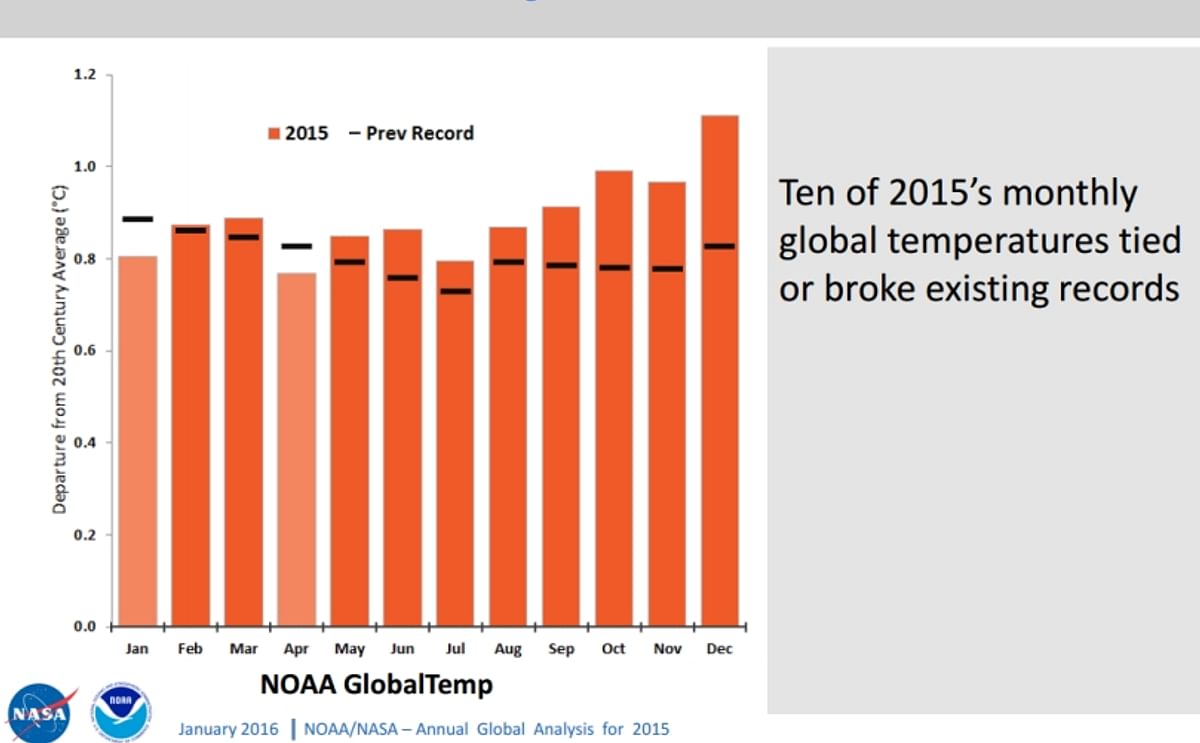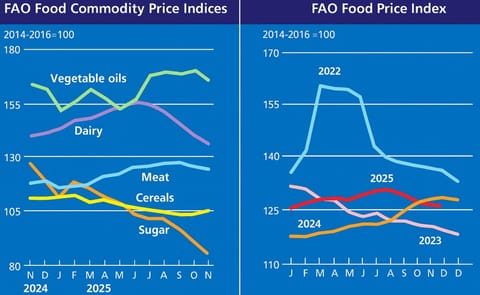Ten of 2015's monthly global temperatures tied or broke existing records (January 2016 | NOAA/NASA - Annual Global Analysis for 2015)
Climate change: 2015 was the warmest year on record by far

NASA and the National Oceanic and Atmospheric Administration (NOAA) announced that according their independent analyses, Earth's surface temperatures in 2015 were the warmest since modern record keeping began in 1880.
Globally-averaged temperatures in 2015 shattered the previous mark set in 2014 by 0.23 degrees Fahrenheit (0.13 Celsius). Only once before, in 1998, has the new record been greater than the old record by this much.
The 2015 temperatures continue a long-term warming trend, according to analyses by scientists at NASA's Goddard Institute for Space Studies (GISS) in New York (GISTEMP). NOAA scientists concur with the finding that 2015 was the warmest year on record based on separate, independent analyses of the data. Because weather station locations and measurements change over time, there is some uncertainty in the individual values in the GISTEMP index. Taking this into account, NASA analysis estimates 2015 was the warmest year with 94 percent certainty.

Global Temperature Time Series 1880 - 2015 (January 2016 | NOAA/NASA - Annual Global Analysis for 2015)
"Climate change is the challenge of our generation, and NASA's vital work on this important issue affects every person on Earth."The planet's average surface temperature has risen about 1.8 degrees Fahrenheit (1.0 degree Celsius) since the late-19th century, a change largely driven by increased carbon dioxide and other human-made emissions into the atmosphere.
"Today's announcement not only underscores how critical NASA's Earth observation program is, it is a key data point that should make policy makers stand up and take notice - now is the time to act on climate."
Most of the warming occurred in the past 35 years, with 15 of the 16 warmest years on record occurring since 2001. Last year was the first time the global average temperatures were 1 degree Celsius or more above the 1880-1899 average.
Phenomena such as El Niño or La Niña, which warm or cool the tropical Pacific Ocean, can contribute to short-term variations in global average temperature. A warming El Niño was in effect for most of 2015.
GISS Director Gavin Schmidt:
"2015 was remarkable even in the context of the ongoing El Niño."Weather dynamics often affect regional temperatures, so not every region on Earth experienced record average temperatures last year. For example, NASA and NOAA found that the 2015 annual mean temperature for the contiguous 48 United States was the second warmest on record.
"Last year's temperatures had an assist from El Niño, but it is the cumulative effect of the long-term trend that has resulted in the record warming that we are seeing."
NASA's analyses incorporate surface temperature measurements from 6,300 weather stations, ship- and buoy-based observations of sea surface temperatures, and temperature measurements from Antarctic research stations. These raw measurements are analyzed using an algorithm that considers the varied spacing of temperature stations around the globe and urban heating effects that could skew the conclusions if left unaccounted for. The result of these calculations is an estimate of the global average temperature difference from a baseline period of 1951 to 1980.
NOAA scientists used much of the same raw temperature data, but a different baseline period, and different methods to analyze Earth's polar regions and global temperatures.
NASA monitors Earth's vital signs from land, air and space with a fleet of satellites, as well as airborne and ground-based observation campaigns. The agency develops new ways to observe and study Earth's interconnected natural systems with long-term data records and computer analysis tools to better see how our planet is changing. NASA shares this unique knowledge with the global community and works with institutions in the United States and around the world that contribute to understanding and protecting our home planet.









